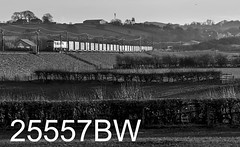
- Get More Information Here:
- Brisbane Storage Unit
Quarter Field Exercise for Your Dog
by
David Coax
During this phase of training, you should start using containers made of various materials such as plastic or paper (not materials that have a great deal of scent), in lieu of cloth bag, for the odour. These type containers are more realistic and will restrict the odour from freely escaping, which consequently increases the difficulty of the exercises.
To further increase the dog\’s aggression toward the odour, various types of string or cord should be used to secure the dummy and odour. However, the retrieving dummy must not be secured so tightly that the dog cannot dislodge it by him. Remember, since dogs are different in so far as their ability to progress in training, each exercise should be specifically planned for an individual animal. Of course, if you are training more than one dog at a time, you want the pre-planned objectives to be reached and the end product to be equal. But in achieving the final objective, it may require more work or training exercises for one dog than it does for another.
As the dog progresses during quartering exercises, then occasionally you should not conceal the retrieving dummy with the odour. This is randomly interjected throughout all phases of odour detection training to ensure the dog is detecting, pursuing and responding to the odour, and is in no way being influenced by the presence of the dummy.In order to reward the dog during exercises when the dummy is not concealed with the narcotic, a \’substitution\’ is accomplished involving the retrieving dummy. In other words when the dog detects the odour pursues it to its origin and displays aggression toward it by biting and/or scratching toward the area, the handler very quickly and discreetly provides the retrieving dummy and plays the tug of war game with him.
\”Substitution must be done in such a manner as to make the dog- believe the dummy came from the location of the odour. If the handler is not quick in his actions of substituting with the dummy, then the dog will see where it came from. Consequently his aggression toward the concealed odour will regress, and he will start looking to the handler to give him the reward as soon as he detects the odour.
NOTE: Experience has proven that if the handler \’substitutes\’ excessively, the dog will quickly realise where the reward is coming from. Consequently when he detects a odour he may display a very minimal degree of interest and aggression toward it, then focus his attention on the handler, awaiting a reward. In order to keep the dog\’s interest and aggression directed toward the origin of the narcotic odour, it is imperative that the dummy be located with the odour in about 90% of the exercises. In this manner, the dog associates receiving his reward from the location of the odour and not the handler. This produces an incentive for the dog to \’trace\’ a narcotic odour and \’pinpoint\’ its origin.
At this particular stage of training, the handler should have good voice control over the dog. Therefore, as the dog demonstrates a degree of proficiency in all aspects of quartering while working on-leash, then similar quartering exercises should be randomly conducted, allowing him to work off-leash.This is a very enjoyable experience for the dog, as he is allowed to run free while hunting for the narcotic odour. Remember that the dog must associate enjoyment with this training if you are to be successful.
The procedure of quartering an area with the dog off-leash is the same as on-leash, except the handler should quarter the area and direct him by voice and movement (same as used in controlled retrieving). When the dog detects the odour and locates the odour, he must dislodge the dummy without assistance from his handler and return it to the handler where he is further rewarded with the tug of war game.
After having intermixed on and off lead quartering exercises and the dog has proven to be proficient, it is time to transition to the next phase of training.
K9 DOG OBEDIENCE TRAINING,Australia provides
Dog Training
and
Dog Training Methods
services located on the Central Coast, 35 Minutes from Sydney and 45 Minutes from Newcastle .
Article Source:
ArticleRich.com